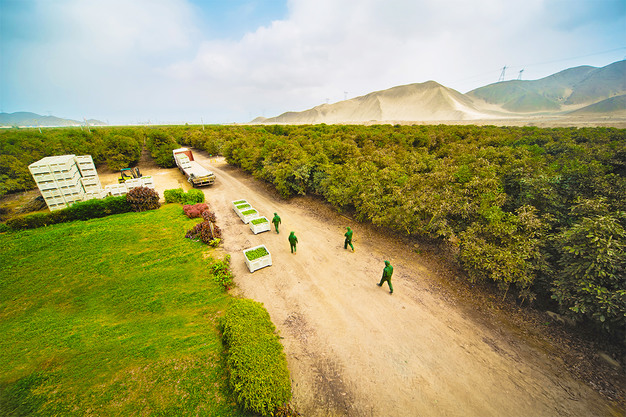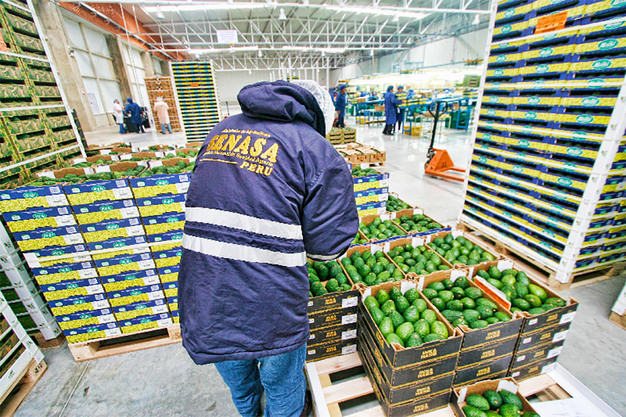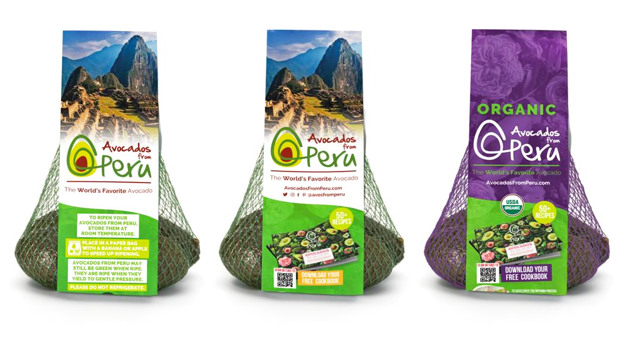What started in 1999 as a collaboration between 13 Hass avocado producers in the central coastal area of Peru, with a total area of just 200 hectares, is nowadays an association with 71 associated producers and exporters. In 2023, Peru shipped 558,000 tons of Hass avocados to international markets and ranked as the second-largest Hass avocado exporter in the world.

Avocado harvest.
"In 1998, a group of avocado producers made a study trip to the neighboring country of Chile to learn about various aspects of cultivation and marketing, and once back in Peru, they decided to create ProHass, following the example of other producer associations," says Arturo Medina Castro, general manager of the association. "Of the 71 associates, the majority combine cultivation and exporting; only 6 of them are entirely devoted to exporting, buying the fruit from small and medium-sized producers, which are very numerous. In fact, of the 27,000 avocado producers in Peru, about 20,000 own a plot of less than one hectare, especially in the Andes."
Main objective in the first years: the opening of new markets
Around 60% of Peru's avocados are shipped to Europe, 20% to the United States, 10% to Chile and the rest to Asian countries, according to Karina Tokashiki, head of the Technical Department. "Although our first shipments to international markets went to Europe and the United States, we have already opened no fewer than 73 markets," says Arturo Medina Castro. "We are not yet present in Taiwan, Mexico, the Philippines, Australia and New Zealand, but we are working on it."
In its early years, the main goal of the association was the opening of new markets; a task carried out jointly with the Government of Peru, and especially with SENASA, the National Agrarian Health Service. The main challenge was the opening of the North American market.
"We worked for more than a decade in gaining access there. It was a struggle against the producers who were already supplying the US market, and we also had to deal with the technical problem of Hass avocados being considered a host for fruit flies, which meant that their entry into the country would entail them being subjected to a quarantine treatment approved by APHIS, the United States Animal and Plant Health Inspection Service. And such a treatment, whether chemical, thermal, or radioactive, was bound to cause considerable commercial damage to the fruit," says Karina. "This situation led us to take precautions. Together with SENASA and the support of APHIS, we carried out a study to demonstrate that this avocado variety is not affected by the fruit flies present in Peru."

Quality inspection carried out by SENASA, the National Agrarian Health Service.
"It took about 4 years to go from the study's conception to its conclusions. It was a study with high scientific rigor, which not only had to meet SENASA's requirements, but also those of APHIS," says Arturo Medina. "This study has allowed us to export to the US and other markets in Asia and America without the fruit having to be subjected to a quarantine treatment. The study was also beneficial for other avocado-producing countries that export to the US, such as Chile, Colombia, Mexico and Panama."
The importance of marketing
Arturo Medina says that ProHass has always tried to stay at the forefront when it comes to promoting the consumption of this avocado variety. It has done so mainly through promotional campaigns abroad, organized through the Peruvian Avocado Commission (PAC) and the World Avocado Organization (WAO), all of which have delivered tangible results and are linked to the increase in worldwide consumption. "The associates have made a great effort to promote the consumption of Peruvian avocados in the world and contributed to the development of this productive sector, regardless of their particular circumstances."

Avocado nets for the US retail, an idea from the Peruvian Avocado Commission (PAC).
"It has been hard for some, but we believe that without this promotion, it would have been impossible to achieve these results and for avocado consumption to increase in Europe and the US. Contributions work differently in each of these cases. In Europe, contributions are voluntary, and in the case of the US, because of the country's internal regulations, an amount per pound is retained when entering the market. The sum is retained by the USDA and 85% of it is returned to the PAC to fund promotional campaigns for the consumption of Peruvian avocados," says Arturo Medina.
Peru is the third largest avocado producer in the world
In 2022, the avocado acreage in Peru stood at 70,545 hectares, which allowed the country to rank as the third largest producer worldwide (and the second largest exporter of Hass avocados in the world), only behind Mexico (234,821 hectares) and Colombia (110,183 hectares), and ahead of international market competitors such as the Dominican Republic (39,581 hectares), Kenya (28,806 hectares), Chile (32,387 hectares) and South Africa (20,639 hectares), and also surpassing important producing countries in the northern hemisphere, such as the United States (20,935 hectares), Spain (19,520 hectares), Israel (12,703 hectares) and Morocco (9,608 hectares), according to data from the United Nations Food and Agriculture Organization (FAO).
Of the 68,000 hectares that Peru has exclusively devoted to Hass avocados, the main growing regions are La Libertad, with about 24% of the total, followed by Lima (18%), Lambayeque (17.5%) and Ica (17%), according to data from ProHass corresponding to the 2023 season. The fruit's cultivation is carried out in the desert valleys of the coastal area, irrigated by the 52 rivers that flow from the mountains. "In the last 30 years, several irrigation projects have been carried out, making it possible to greatly expand the acreage devoted to horticultural products exported by Peru to international markets. The first irrigation project in Peru was Chavimochic, located in La Libertad, where companies associated with ProHass have avocado orchards of more than 1,000 hectares," says Karina Tokashiki.

Advertising campaigns on the streets of the US.
"After the irrigation project in Olmos, in the region of Lambayeque, is completed, there should be more areas benefitting from new irrigation projects, including the third stage of Chavimochic in La Libertad and Majes Siguas, in the region of Arequipa, in the south of the country. The advantage of cultivating fruits in desert areas is undoubtedly the lower pressure of fungal diseases."
The range of varieties is expanding
Peruvian avocados are commercially available from week 12 to 37, with the peak of the campaign reached between weeks 21 and 31. However, with the new varieties Maluma, Carmen and Gem, the Peruvian sector can start the season earlier and obtain higher market prices. The Lamb Hass variety, on the other hand, makes it possible to extend the season in its final stages. "In fact, with advances in genetic improvement, it is likely that more varieties will be added to our range of avocados in Peru in the coming years," says Arturo Medina Castro.
However, according to the general manager, there is also the risk of overproduction. "While we are lacking neither land nor water, we are concerned about the prices paid in the market at certain times of the season, given the concentration of the supply in the central part of Peru, and the pressure from the fruit supplied by our competitors, namely South Africa and Kenya in Europe, and the Mexican and local productions in the United States, which can cause prices to fall," says the general manager.
Thus, being able to advance the start of the season with earlier varieties, complemented with the productions of small producers in the mountains, where the peak of the harvest is reached between January and March, represents a great advantage. And while the logistics from high altitude areas is not easy, partly due to the acreage being highly fragmented, as there are around 20,000 producers, this production model works and it's also profitable for small growers, who have managed to improve their standard of living through the cultivation of avocados and other horticultural products, according to Arturo Medina Castro.
The quality of avocados is determined by their dry matter
In addition to striving for a more staggered supply, ProHass insists on training producers to make sure the fruit reaches the market with the correct dry matter content. "The fact is that the quality of avocados is largely determined by their dry matter. We are working to improve the quality of our fruit with the implementation of measures such as post-harvest tests, carried out in partnership with the National Agrarian University La Molina (UNALM), where we have controlled atmosphere and ripening chambers installed by ProHass. We want to find the right methods to achieve even higher quality standards for the avocados produced in Peru. The goal is to optimize the service we provide to those of our associates exporting to clients abroad," says the general manager.

For more information:
Arturo Medina Castro (General Manager)
ProHass
Av. Nicolás Arriola 314 Of. 901
Urb. Santa Catalina, La Victoria, Lima, Peru
Tel.: +51 1 225 1626
Mobile: +51 999 965 777
[email protected]
www.prohass.com.pe
